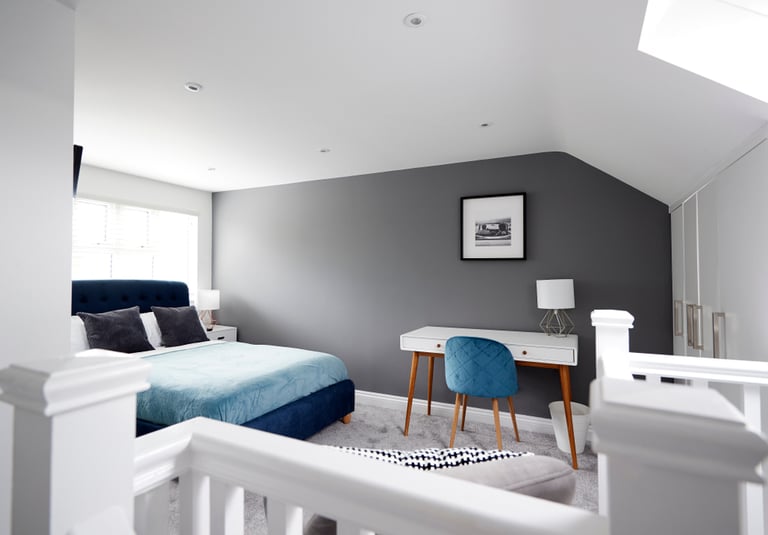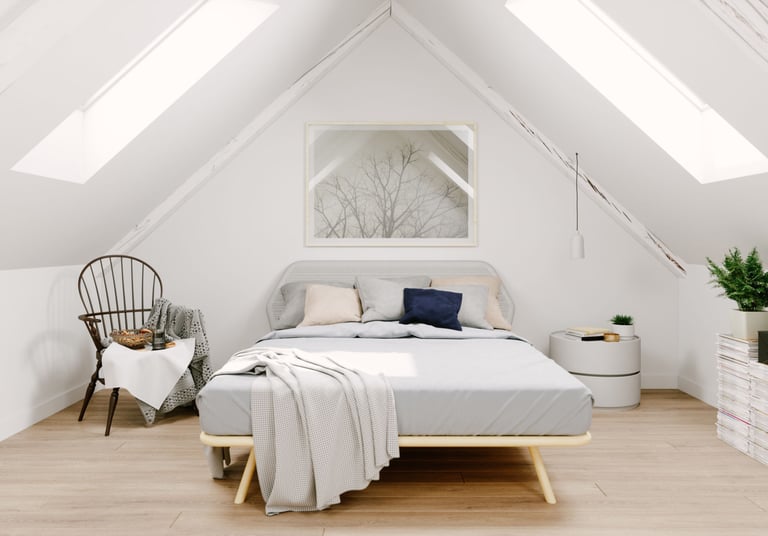Transform Your Space with Expert Loft Conversion in London
Do You Want To Elevate Your Living Space With A Loft Conversion in London?
Expand your living space by converting the often unused attic area into a stunning, functional, and elegant living area. Let xLine Architecture Guide You Every Step of Your Loft Conversion London.




Maximize space, style, and value. Start your loft conversion journey today. Our team of skilled architects, structural engineers, and planning consultants can assist you throughout the entire process
Planning and Design
We will work closely with you to understand your vision and requirements, creating a custom loft conversion design that optimizes space and functionality.
Permits and Regulations
We will navigate the planning permission process and ensure that your loft conversion meets all relevant building regulations.
Structural Assessment
Our experienced structural engineers will conduct a thorough assessment of your property, ensuring that the loft conversion is structurally sound and safe.
Project Management
From concept to completion, our dedicated project managers will oversee all aspects of the loft conversion, ensuring a smooth and efficient process.
Quality Construction
We collaborate with skilled contractors to deliver high-quality craftsmanship and attention to detail in every aspect of the loft conversion.
Loft Conversion Building Regulations
Do I need to apply for building regulations approval for my Loft conversion in London? Why are building regulations required for attic conversion? What building regulations should I consider? How do I apply for approval?
In this article, you will get answers to all your questions and everything you need to know about building regulations concerning loft conversion. Read More
How We Can Help You
With over three decades of experience, XLine Architecture has established a reputation as the leading loft conversion experts in London. Our in-depth knowledge of local regulations and construction practices ensures a seamless journey through the planning and building process. Trust us to provide innovative design solutions that optimize space and functionality while adhering to your vision and preferences. Our team of skilled professionals will guide you through every stage of loft conversion london, offering a stress-free and enjoyable experience throughout the project.
Few things to consider when doing a loft conversion
Existing Ceiling to Ridge board height. It should be at least 2.2m. Any less you might need to lower your ceiling.
Permitted Development rights. If your property does not benefit from Permitted development rights, then you will need to apply to council for Planning permission. This could be due to the property being in a conservation area , permitted development rights have been taken away or your property is a flat / maisonette. You can find out more about loft permitted development rules and regulations by clicking here
Party wall Agreements. Speak to your neighbors as early as possible and find out whether formal party wall agreement will be needed or not, as this can take a lot of time.
Architectural Plans and Structural Calculations. A good set of plans with structural engineering calculations will be basis of getting accurate construction quotes. So this should be a priority too.
Builder. You are very lucky if you find your builder from first few contacts as finding quality builders can be a struggle as they are busy with works all the time. Planning ahead will mean you can book a good builder few months prior starting works.
Key Factors for loft conversion london
Before embarking on this exciting journey, a few essential factors need consideration:
Familiarize yourself with local planning regulations to determine if your loft conversion can be done under permitted development rights or if planning permission is required. Our expert planning consultants at xLine Architecture will guide you throughout this process.
Ensure that your property’s structure can support the conversion by seeking professional advice from our skilled structural engineers.
Have a clear vision of how you want to utilize the loft space. Work closely with our architects to create a design that optimizes natural light, ventilation, and layout.
Address: 31 Goodmayes Road, Essex, IG3 9UH
Email: info@xlinearchitecture.co.uk
Phone: 020 8050 9695


Mobile: 079 4609 6932
Registered in England No. 12481695
